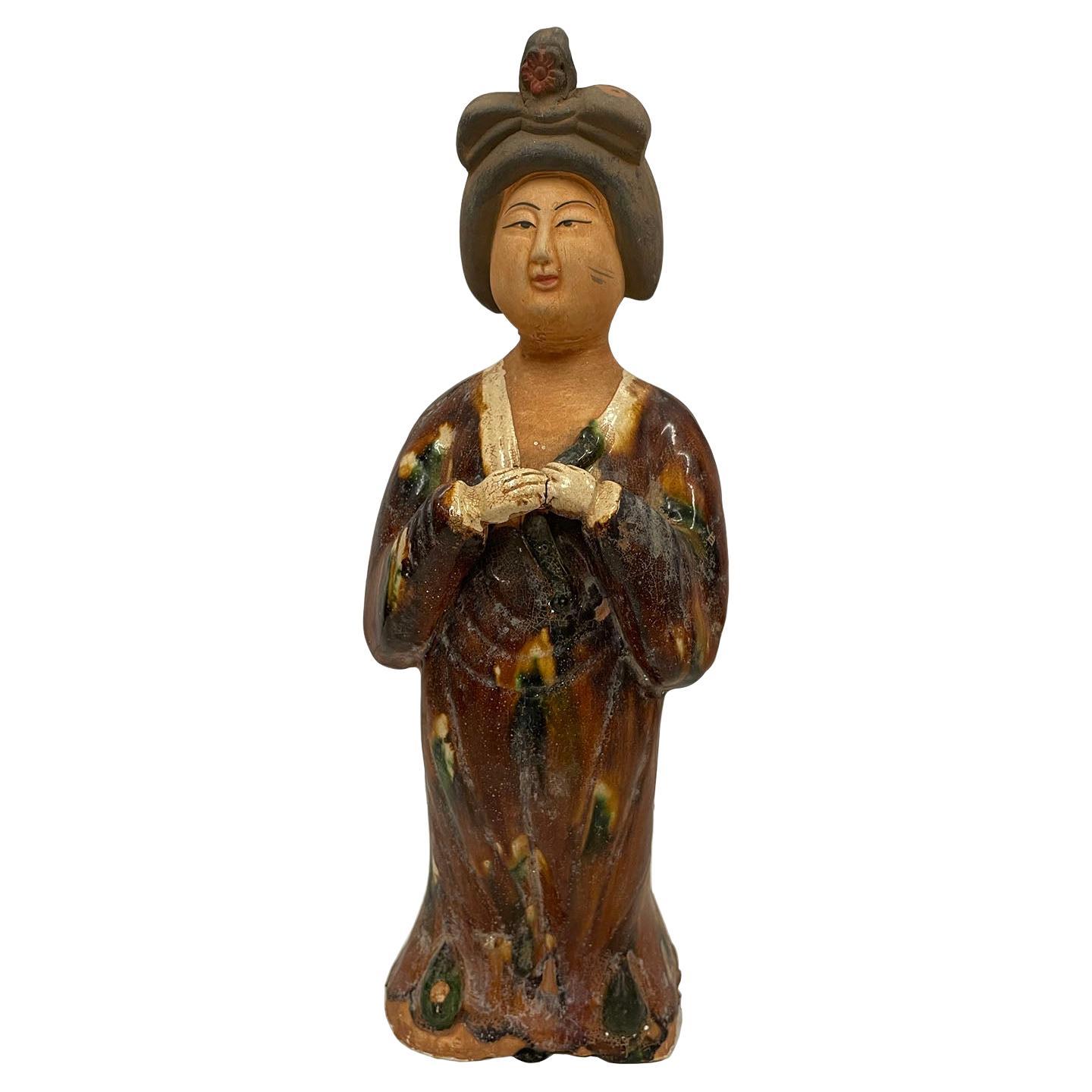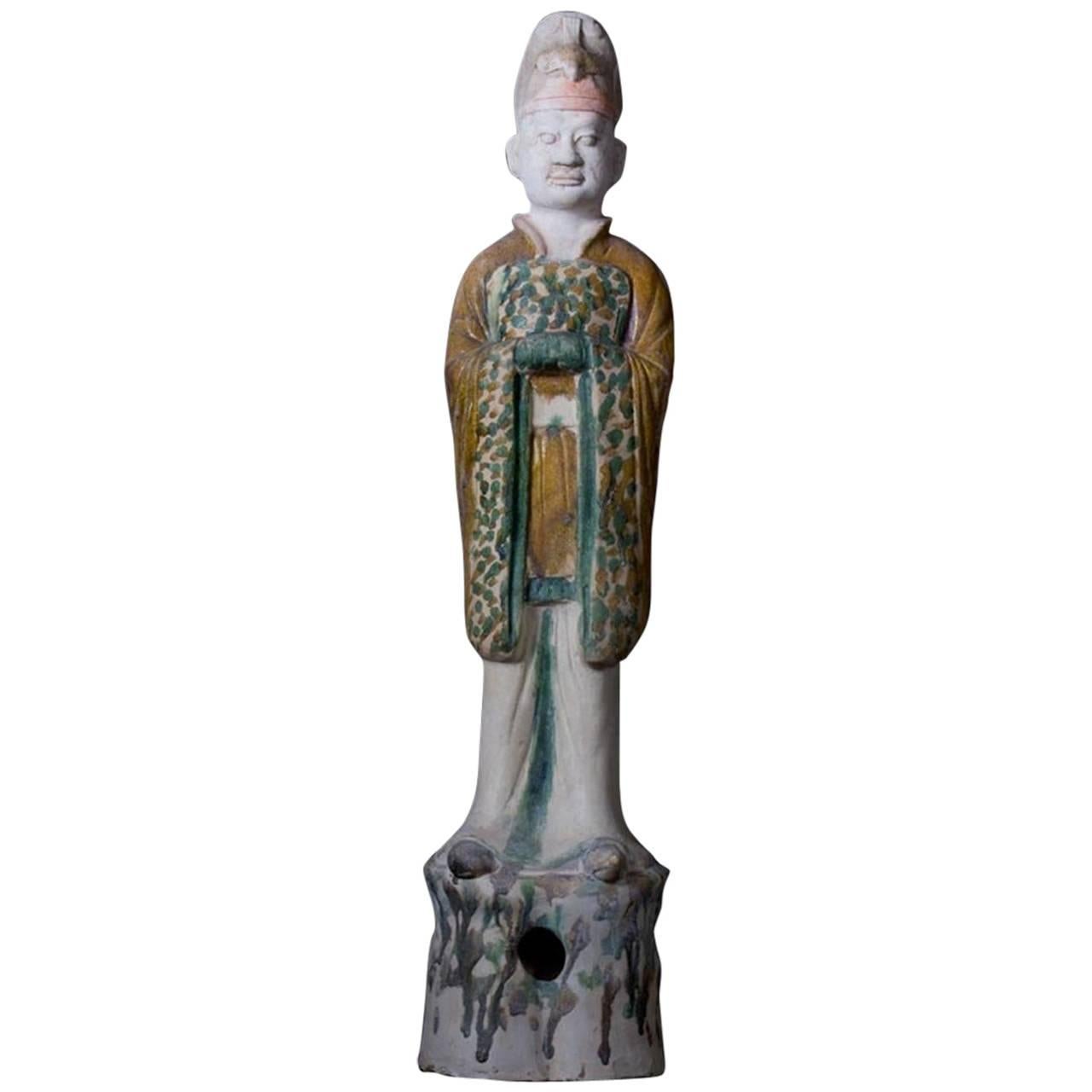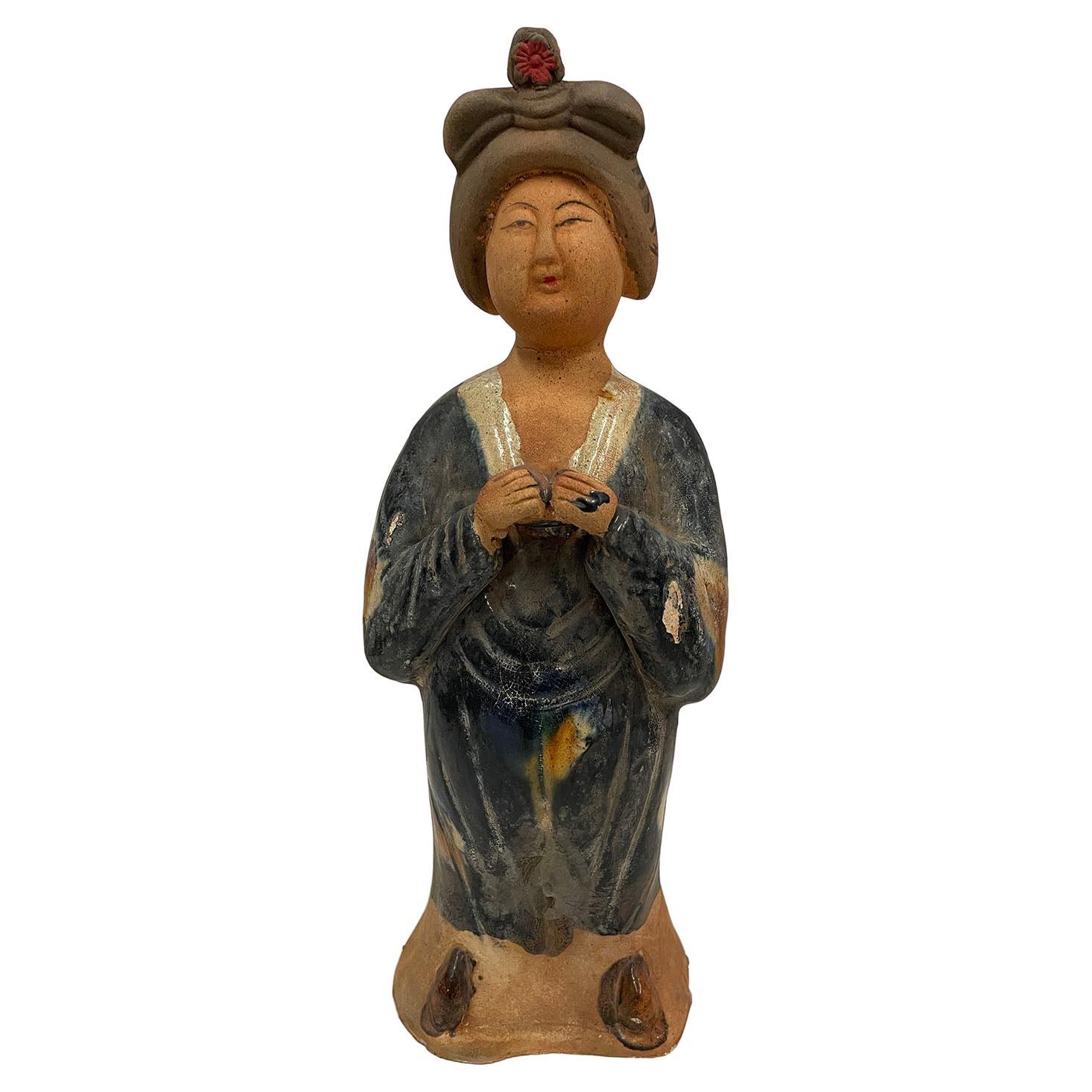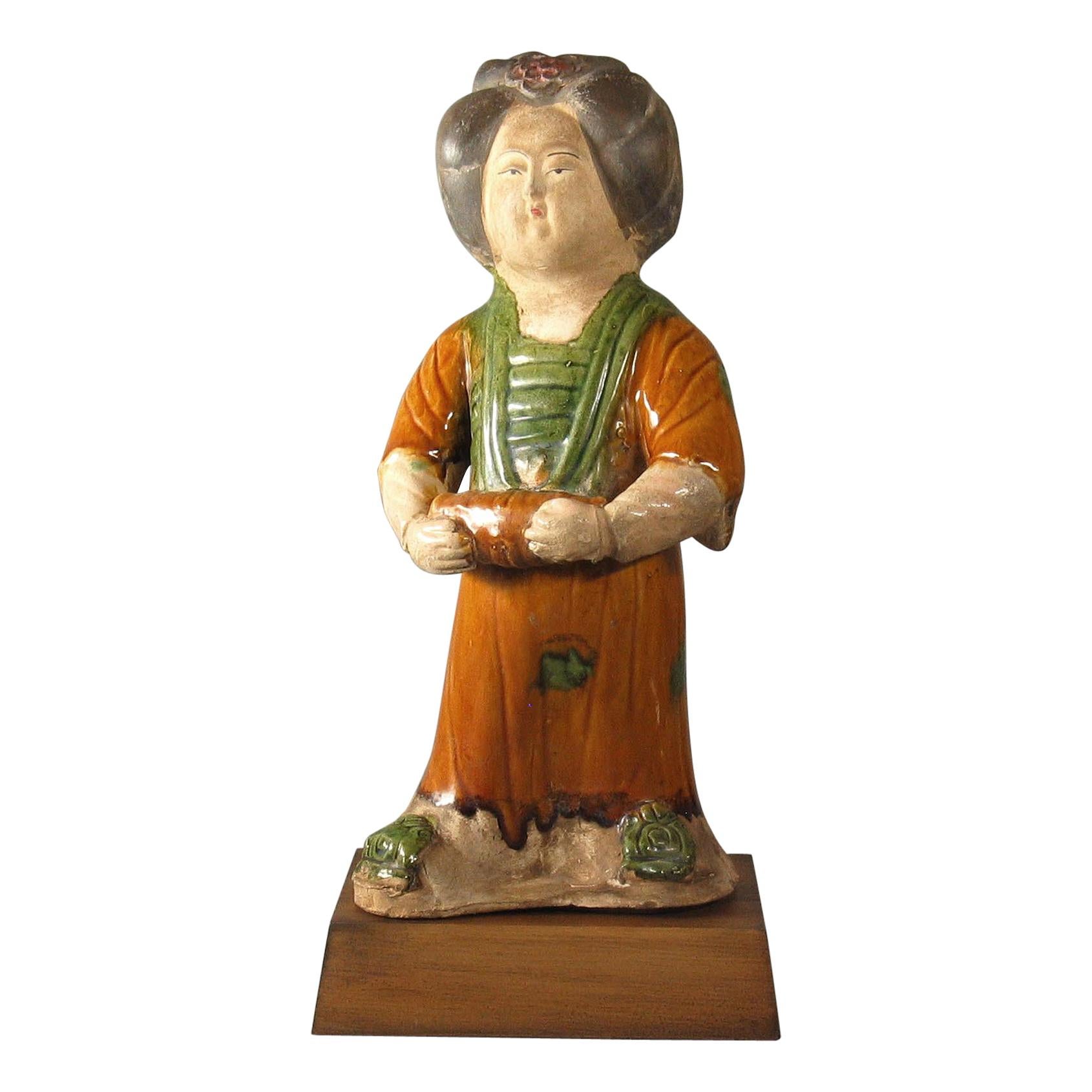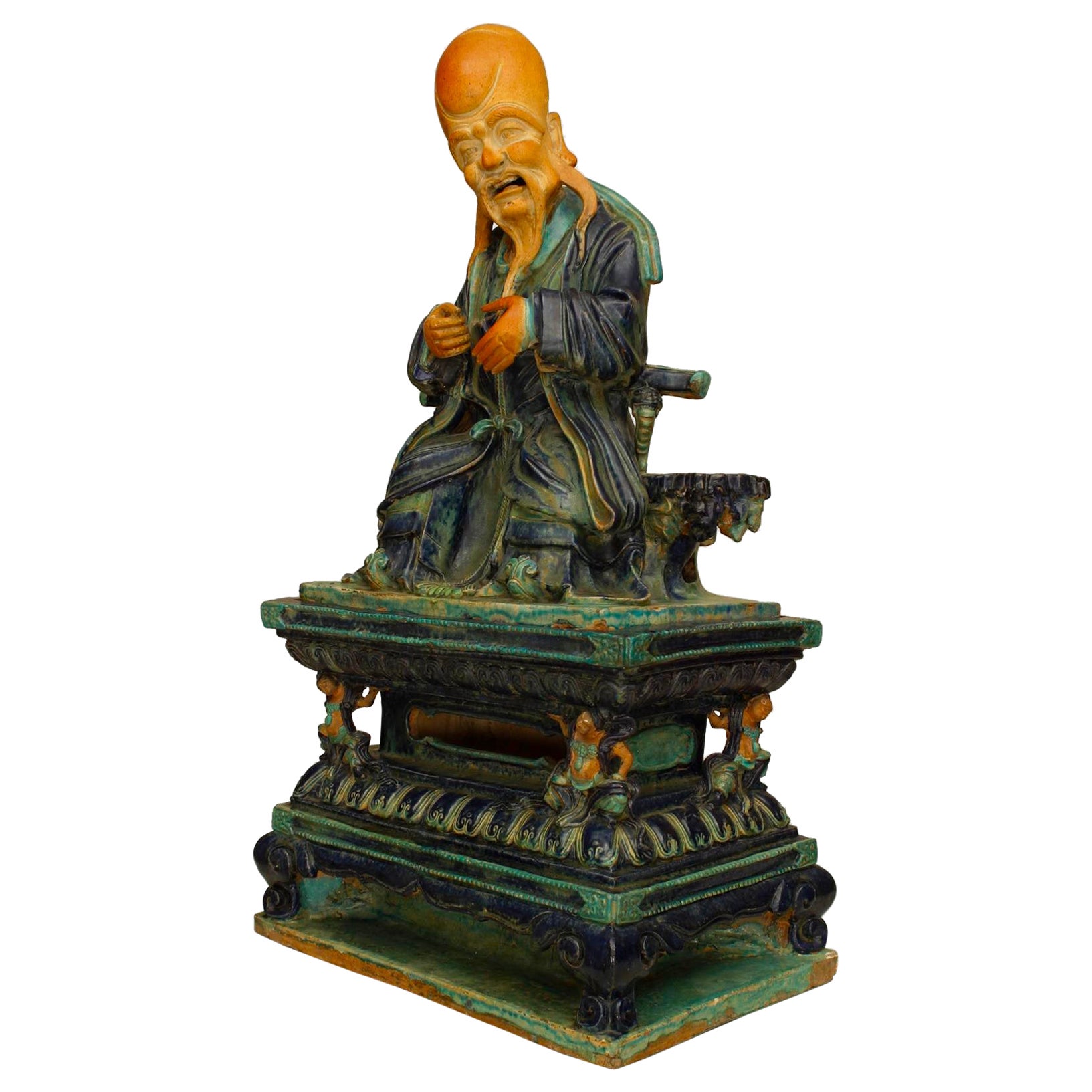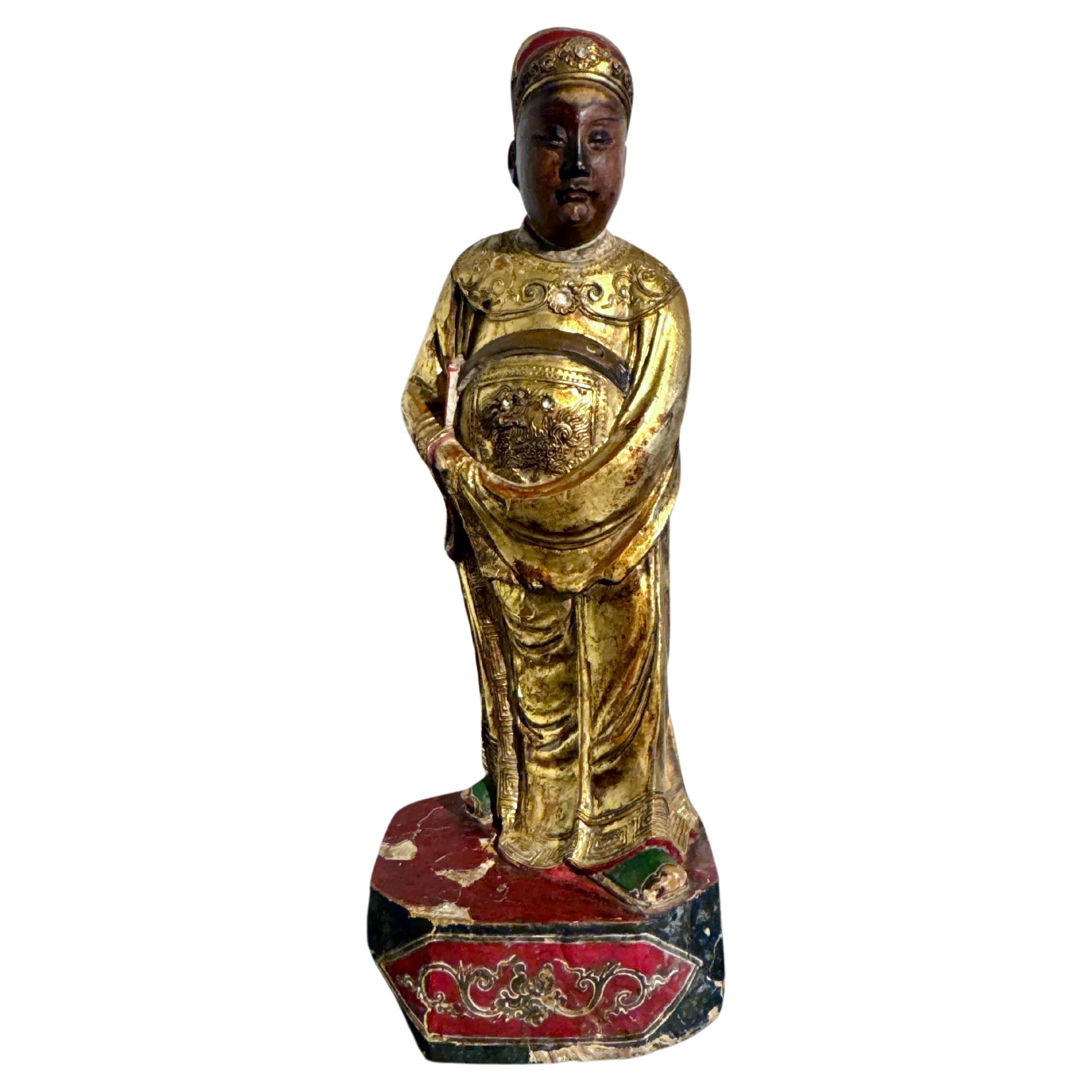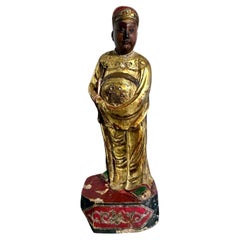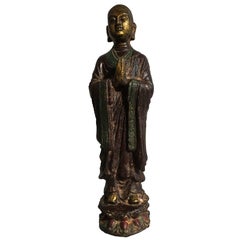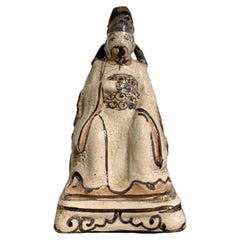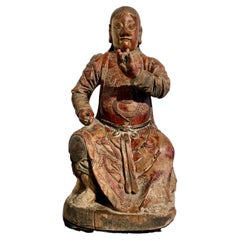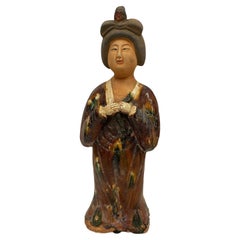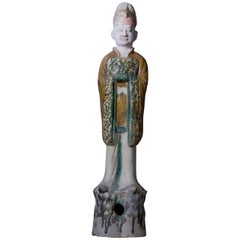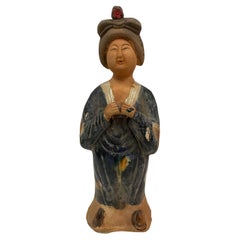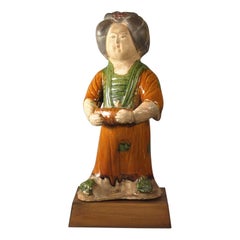Items Similar to Chinese Ming Dynasty Glazed Tall Attendant Figure, 16th-17th Century, China
Want more images or videos?
Request additional images or videos from the seller
1 of 14
Chinese Ming Dynasty Glazed Tall Attendant Figure, 16th-17th Century, China
$1,800
£1,360.58
€1,563.54
CA$2,506.49
A$2,788.37
CHF 1,461.70
MX$34,073.15
NOK 18,612.88
SEK 17,521.45
DKK 11,671.27
Shipping
Retrieving quote...The 1stDibs Promise:
Authenticity Guarantee,
Money-Back Guarantee,
24-Hour Cancellation
About the Item
A tall Chinese green and amber glazed figure of an attendant, Ming Dynasty, 16th-17th century, China.
The figure stands upon an integral plinth, dressed in long robes and a generous overcoat with wide sleeves, hands hidden within the folded sleeves. The robes glazed green, with amber glazed trim.
The head is crafted separately, and is removable.
The green glaze with a wonderful crackle and light iridescence.
Figures such as these were usually part of a larger grouping and meant to attend the deceased in the afterlife.
- Dimensions:Height: 16.5 in (41.91 cm)Width: 5 in (12.7 cm)Depth: 4.75 in (12.07 cm)
- Style:Ming (Of the Period)
- Materials and Techniques:
- Place of Origin:
- Period:
- Date of Manufacture:16th-17th Century
- Condition:Wear consistent with age and use. Minor fading.
- Seller Location:Austin, TX
- Reference Number:1stDibs: LU894721490172
About the Seller
5.0
Platinum Seller
Premium sellers with a 4.7+ rating and 24-hour response times
Established in 2001
1stDibs seller since 2010
345 sales on 1stDibs
Typical response time: <1 hour
- ShippingRetrieving quote...Shipping from: Austin, TX
- Return Policy
Authenticity Guarantee
In the unlikely event there’s an issue with an item’s authenticity, contact us within 1 year for a full refund. DetailsMoney-Back Guarantee
If your item is not as described, is damaged in transit, or does not arrive, contact us within 7 days for a full refund. Details24-Hour Cancellation
You have a 24-hour grace period in which to reconsider your purchase, with no questions asked.Vetted Professional Sellers
Our world-class sellers must adhere to strict standards for service and quality, maintaining the integrity of our listings.Price-Match Guarantee
If you find that a seller listed the same item for a lower price elsewhere, we’ll match it.Trusted Global Delivery
Our best-in-class carrier network provides specialized shipping options worldwide, including custom delivery.More From This Seller
View AllChinese Taoist Figure of Wenchang, Late Qing Dynasty, c. 1900, China
Located in Austin, TX
A tall and impressive figure of the Taoist deity Wenchang Wang, carved, gessoed, lacquered, gilt and polychromed wood, Late Qing Dynasty, circa 1900, Fujian, China.
Wenchang, the T...
Category
Antique Early 1900s Chinese Qing Sculptures and Carvings
Materials
Wood
Ming Dynasty Polychrome Lacquer and Gilt Iron Figure of Ananda
Located in Austin, TX
Ananda is portrayed in a typical fashion, as a youthful monk with a shaved head and dressed in simple robes. He stands upon a double lotus pedestal with hands clasped in front of him...
Category
Antique 16th Century Chinese Ming Sculptures and Carvings
Materials
Iron
Chinese Small Cizhou Glazed Figure of a Daoist Deity, Song to Ming Dynasty
Located in Austin, TX
A small and charming Chinese cizhou ware glazed pottery figure of a Taoist deity or official, Song to Ming Dynasty, 13th - 15th century, China, ex. Christi...
Category
Antique 15th Century and Earlier Chinese Ming Sculptures and Carvings
Materials
Stoneware
Chinese Carved and Lacquered Figure of Zhenwu, Qing Dynasty, 19th century, China
Located in Austin, TX
A powerful Chinese figure of the Taoist diety Zhenwu (Xuanwu), carved and lacquered wood with applied lacquer details, Qing Dynasty, 19th century or earlier, China.
Zhenwu, also kno...
Category
Antique 19th Century Chinese Qing Sculptures and Carvings
Materials
Wood, Hardwood
Chinese Famille Rose Enameled Porcelain Guanyin, Zeng Longsheng, 1980's, China
Located in Austin, TX
A large and vibrantly decorated Chinese famille rose enameled porcelain figure of Guanyin, marked Zeng Longsheng (1901 - 1964), but of later manufacture...
Category
Vintage 1980s Chinese Qing Sculptures and Carvings
Materials
Porcelain
Chinese Tang Dynasty Pottery Court Lady
Located in Austin, TX
Painted pottery figure of an opulent Chinese court woman with up-swept hair and standing in a simply draped robe from the Tang Dynasty (618-907 AD). Her beauty is illuminated by the ...
Category
Antique 15th Century and Earlier Chinese Tang Antiquities
Materials
Pottery, Acrylic
You May Also Like
Vintage Chinese Tang Tri-Colored Glazed Tomb Ceramic Statue
Located in Pomona, CA
This magnificent Vintage Chinese Tang tri-color glazed ceramic beautify figure was hand made with famous tri-colored glaze on the ceramic. It has beautiful color and detailed carving...
Category
Mid-20th Century Chinese Chinese Export Figurative Sculptures
Materials
Ceramic
Tang Dynasty Court Official in Sancai Glazed Robes, China '618-907' - TL Tested
Located in San Pedro Garza Garcia, Nuevo Leon
A Tang dynasty sancai (three color) glazed pottery model of a Taoist official, TL tested by Ralf Kotalla - worldwide oldest private laboratory specialized for genuine thermoluminesce...
Category
Antique 15th Century and Earlier Chinese Tang Antiquities
Materials
Terracotta
Vintage Chinese Tang Tri-Colored Glazed Tomb Ceramic Statue
Located in Pomona, CA
This magnificent Vintage Chinese Tang tri color glazed ceramic beautify figure was hand made with famous tri-colored glaze on the ceramic. It has beautiful color and detailed carving...
Category
Mid-20th Century Chinese Chinese Export Figurative Sculptures
Materials
Ceramic
Tang Style Sancai-Glazed Figure of a Court Lady
Located in Ottawa, Ontario
A Tang style Sancai-glazed
Figure of a Court Lady,
20th century.
Standing figure with
the long amber and green-glazed robe
and green-glazed shoes,
the delicate features ...
Category
20th Century Chinese Chinese Export Figurative Sculptures
Materials
Pottery
Ming Dynasty Porcelain Shou Lau Figure
Located in Queens, NY
Asian Chinese (Ming Dynasty-Circa 1500) blue & green porcelain Shou Lau seated figure with oversize head (symbolism of longevity & luck) on a base suppo...
Category
Antique 16th Century Chinese Chinese Export Figurative Sculptures
Materials
Porcelain
Chinese Tang Dynasty-Style Sancai Glazed Terra Cotta Woman Figure
Located in Queens, NY
Antique Chinese Tang Dynasty-style terra cotta figure of a woman wearing robes bearing the Tang Dynasty's traditional tri-color glaze, or Sancai, utilizing brown, green and off-white...
Category
20th Century Chinese Export Figurative Sculptures
Materials
Terracotta
More Ways To Browse
Chinese Green Glazed
Tall Figure Sculpture
Tall Plinth
Tall Art Pottery
Chinese Sleeves
Chinese Head Sculpture
Antique Chinese Robe
Chinese Tall Sculpture
Crackle Glaze Chinese
Chinese Ming Pottery
16th Century Dress
Chinese Plinth
Crackle Glazed Sculptures
Ming Chinese Figures
Chinese Pottery Figure
Ming Dynasty Pottery
Green Ming Dynasty
Ming Dynasty Sculpture
